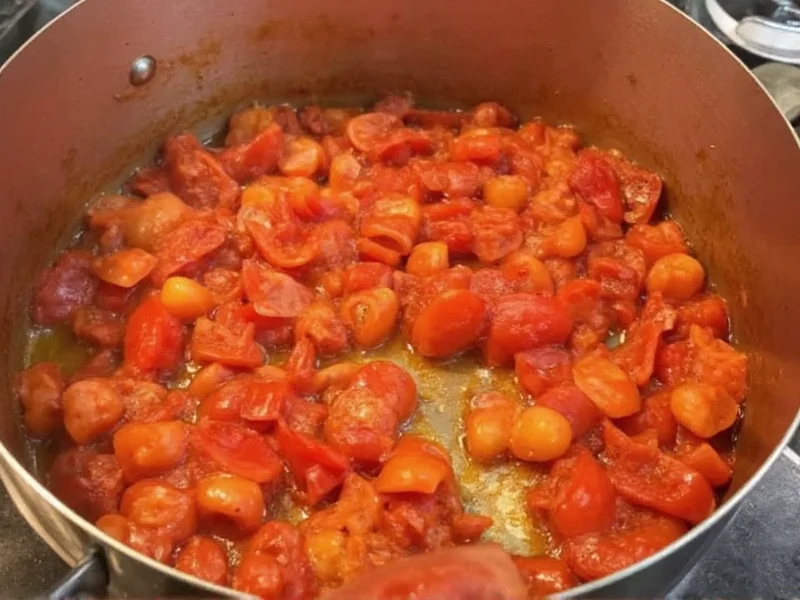When your chili turns out hotter than expected, knowing how to reduce spiciness quickly becomes essential. Many home cooks face this common kitchen dilemma, especially when preparing dishes with fresh chilies or potent spices. Understanding the science behind chili heat helps you choose the most effective cooling method for your specific situation.
Why Chili Gets Too Spicy
Chili heat comes from capsaicin, the compound found in chili peppers that triggers heat receptors in your mouth. When you add too many hot peppers, use overly potent varieties, or miscalculate spice measurements, your chili can become uncomfortably spicy. Capsaicin is oil-soluble and binds to receptors in your mouth, creating that burning sensation. The key to cooling down spicy chili lies in understanding how to neutralize or dilute this compound effectively.
Most Effective Methods to Cool Down Spicy Chili
Dairy Solutions for Immediate Relief
Dairy products provide the fastest relief from chili heat because casein, a protein in milk, breaks down capsaicin molecules. For best results:
- Add 1/4 to 1/2 cup of whole milk, heavy cream, or half-and-half per quart of chili
- Stir in plain yogurt or sour cream (1/4 cup per quart) for tangy flavor
- Use full-fat dairy for maximum effectiveness as capsaicin is fat-soluble
Skim milk works less effectively since capsaicin binds to fats. For vegan alternatives, coconut milk provides similar benefits due to its high fat content.
Acidic Ingredients to Balance Heat
Acids help neutralize the pH balance of your chili, reducing perceived heat. Effective acidic additions include:
- Fresh lime or lemon juice (start with 1-2 tablespoons per quart)
- Vinegar (apple cider or white, 1 tablespoon increments)
- Canned tomatoes or tomato paste (1/4 cup)
- Pickled vegetables or their brine
Acid works particularly well when you've overused dried spices rather than fresh peppers. Add acids gradually while tasting to avoid making your chili too sour.
Sweeteners to Counteract Spiciness
Sugar balances heat by counteracting capsaicin's effects on taste receptors. Effective sweetening options:
- Granulated sugar (1-2 teaspoons at a time)
- Honey or maple syrup (1 tablespoon increments)
- Shredded carrots or sweet potatoes (1/2 cup diced)
- Tomato-based products which contain natural sugars
Sweeteners work best when combined with dairy or acid for a more complex flavor profile. Avoid adding too much sugar, which can make your chili taste unbalanced.
Dilution Techniques for Overly Spicy Chili
When your chili is extremely spicy, dilution provides the most reliable solution:
- Add more broth or stock (1/2 cup increments)
- Incorporate additional beans, corn, or diced tomatoes
- Mix in cooked rice, quinoa, or pasta
- Add extra meat or vegetables to increase volume
Dilution maintains your chili's original flavor profile while reducing overall heat concentration. This method works particularly well for how to fix overly spicy chili without changing flavor concerns.
| Method | Effectiveness | Flavor Impact | Time Required |
|---|---|---|---|
| Dairy (milk, yogurt) | ★★★★★ | Mild creaminess | Immediate |
| Acid (citrus, vinegar) | ★★★★☆ | Tangy brightness | 2-5 minutes |
| Sugar/honey | ★★★☆☆ | Sweet balance | Immediate |
| Dilution | ★★★★☆ | Minimal change | 5-10 minutes |
| Starchy ingredients | ★★★☆☆ | Thickened texture | 10-15 minutes |
What NOT to Do When Fixing Spicy Chili
Certain common approaches actually worsen chili spiciness or create new problems:
- Don't add water - Water spreads capsaicin rather than neutralizing it
- Avoid excessive sugar - Creates unbalanced sweet-spicy flavor
- Don't just keep cooking - Extended cooking time intensifies heat
- Don't add more hot ingredients - Trying to balance heat with more spice rarely works
Understanding these pitfalls helps avoid making your spicy chili too hot situation worse while searching for solutions.
Preventing Overly Spicy Chili in the Future
The best approach to how to cool down a spicy chili is prevention. Follow these tips for perfectly balanced chili every time:
- Add spices gradually, tasting as you go
- Remove seeds and membranes from fresh chilies (where most capsaicin resides)
- Start with half the recommended spice amount, then adjust
- Use milder pepper varieties like ancho instead of habanero
- Keep dairy or acid nearby while cooking for quick adjustments
Special Considerations for Different Chili Types
Tex-Mex chili benefits from dairy additions, while Cincinnati-style chili works better with sugar and acid. Bean-based vegetarian chili responds well to dilution with additional beans and tomatoes. Understanding your specific chili variety helps select the most appropriate methods to tone down spicy chili heat without compromising regional authenticity.
When All Else Fails: Creative Solutions
If your chili remains too spicy after multiple corrections, consider repurposing it:
- Use as a spicy topping for baked potatoes
- Incorporate into cornbread or muffin batter
- Thin with extra broth to make a spicy soup
- Freeze portions for future use as a flavor booster











 浙公网安备
33010002000092号
浙公网安备
33010002000092号 浙B2-20120091-4
浙B2-20120091-4